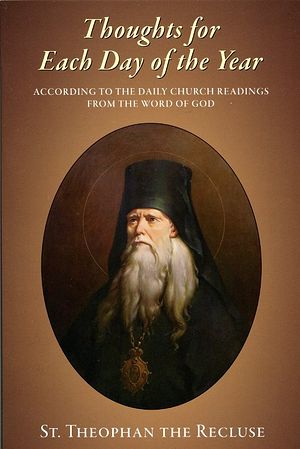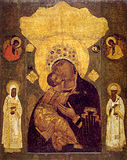

| Previous day | Next day |
| Old Style
March 3
|
Monday |
New Style
March 16
|
|
4th Week of Great Lent.
Tone 7.
Великий пост. |
Monastic rule: xerophagy (bread, uncooked fruits and vegetables).
|
![]() Martyrs Eutropius and Cleonicus of Amasea, and Basiliscus of Comana (ca. 308).
Martyrs Eutropius and Cleonicus of Amasea, and Basiliscus of Comana (ca. 308).
St. Piama, virgin (337).
Volokolamsk Icon of the Most Holy Theotokos (1572).
Martyr Hemetherius of Spain (ca. 298). St. Alexandra of Alexandria (4th c.). St. Winwaloe, abbot of Landevennec, Brittany (ca. 530). St. Caluppan of Auvergne (Gaul) (576). St. Non, mother of St. David of Wales (6th c.). St. John IV (Chrysostom), catholicos of Georgia (1001). Hieromartyr Theodoretus, priest, of Antioch (361-363) (Gr. Cal).
Thoughts for Each Day of the Year
According to the Daily Church Readings from the Word of God
By St. Theophan the Recluse

Monday (the fourth week of Lent).
The Apostle Paul says that the Israelites, crossing the sea, were baptized in it (I Cor. 10:2).[1] Such a baptism served for them as a division between Egypt and themselves. Peter the Apostle adds: The like figure whereunto even baptism doth also now save us (I Pet. 3:21). Our baptism saves us and serves as a dividing wall between the dark, satanic realm of sin and the world, and the brightness of life in Christ. One who is baptized cuts himself off from all earthly hopes and supports, and lives in this age as if in a desert, not tied to anything. His heart is not on the earth, it is totally in that age. All that is here touches him in passing, so that having a wife he is as though he has none; buying, he is as though possessing nothing. In general, he uses the world, as though he uses it not (cf. I Cor. 7:30).
[1]The
Slavonic for I Pet. 3:21 reads: So in like manner
baptism doth also now save us.


